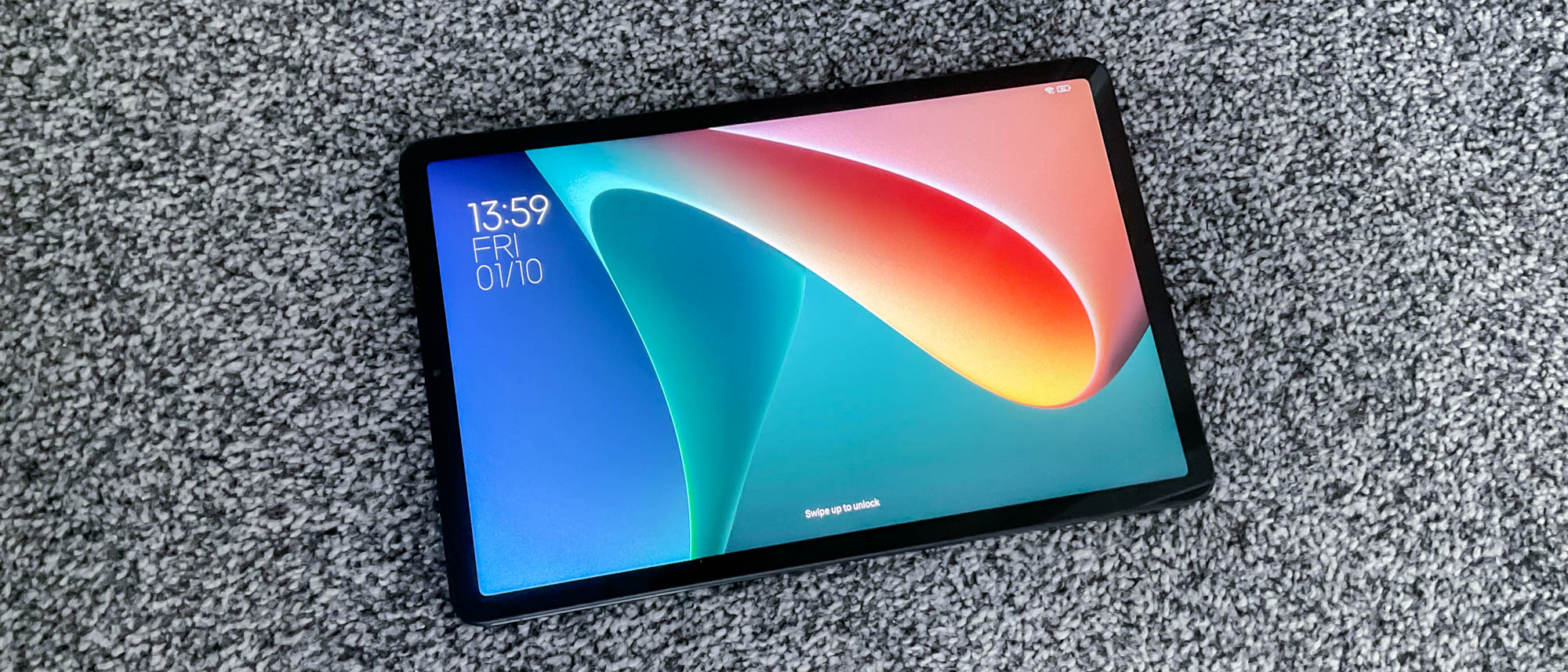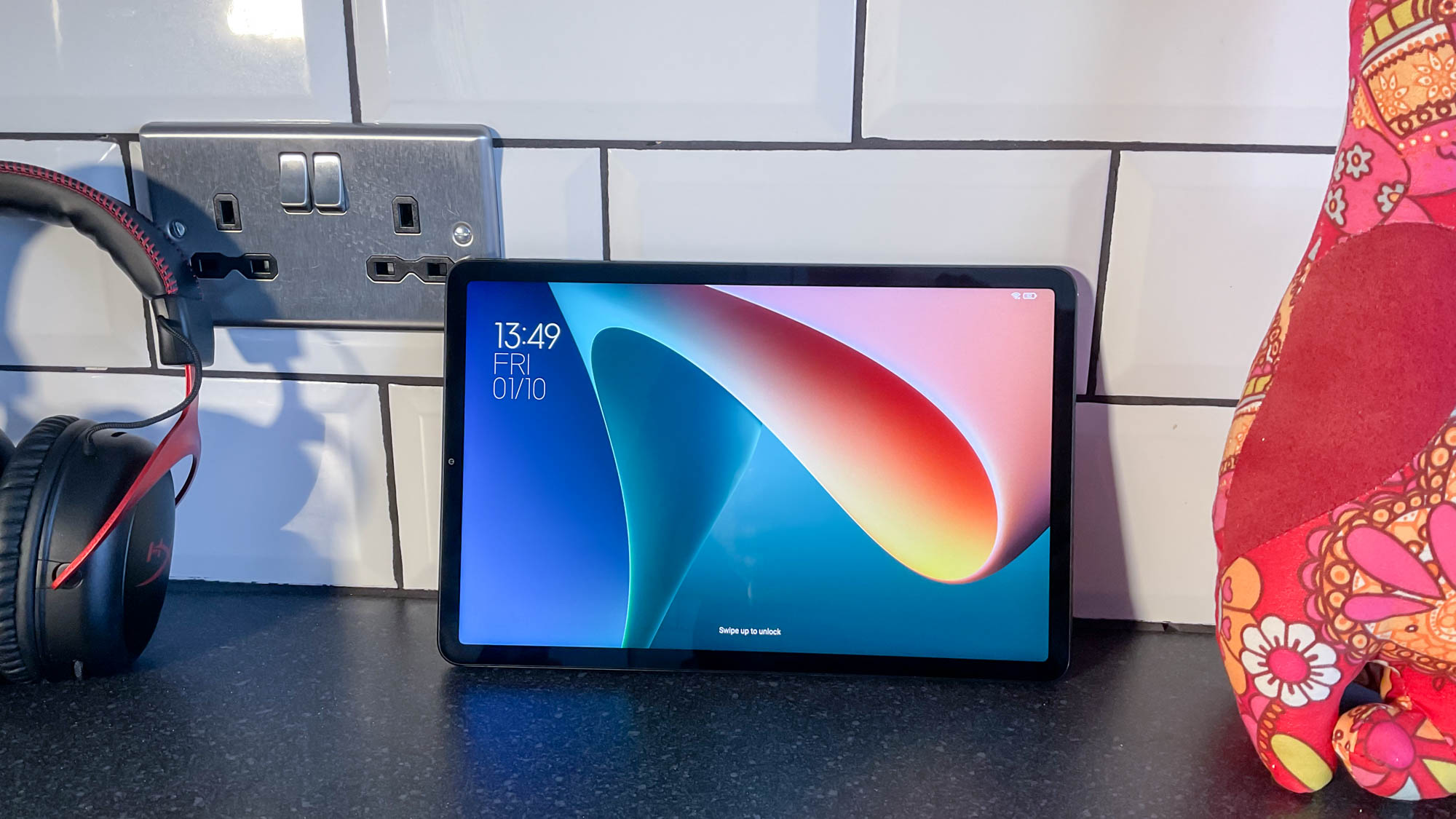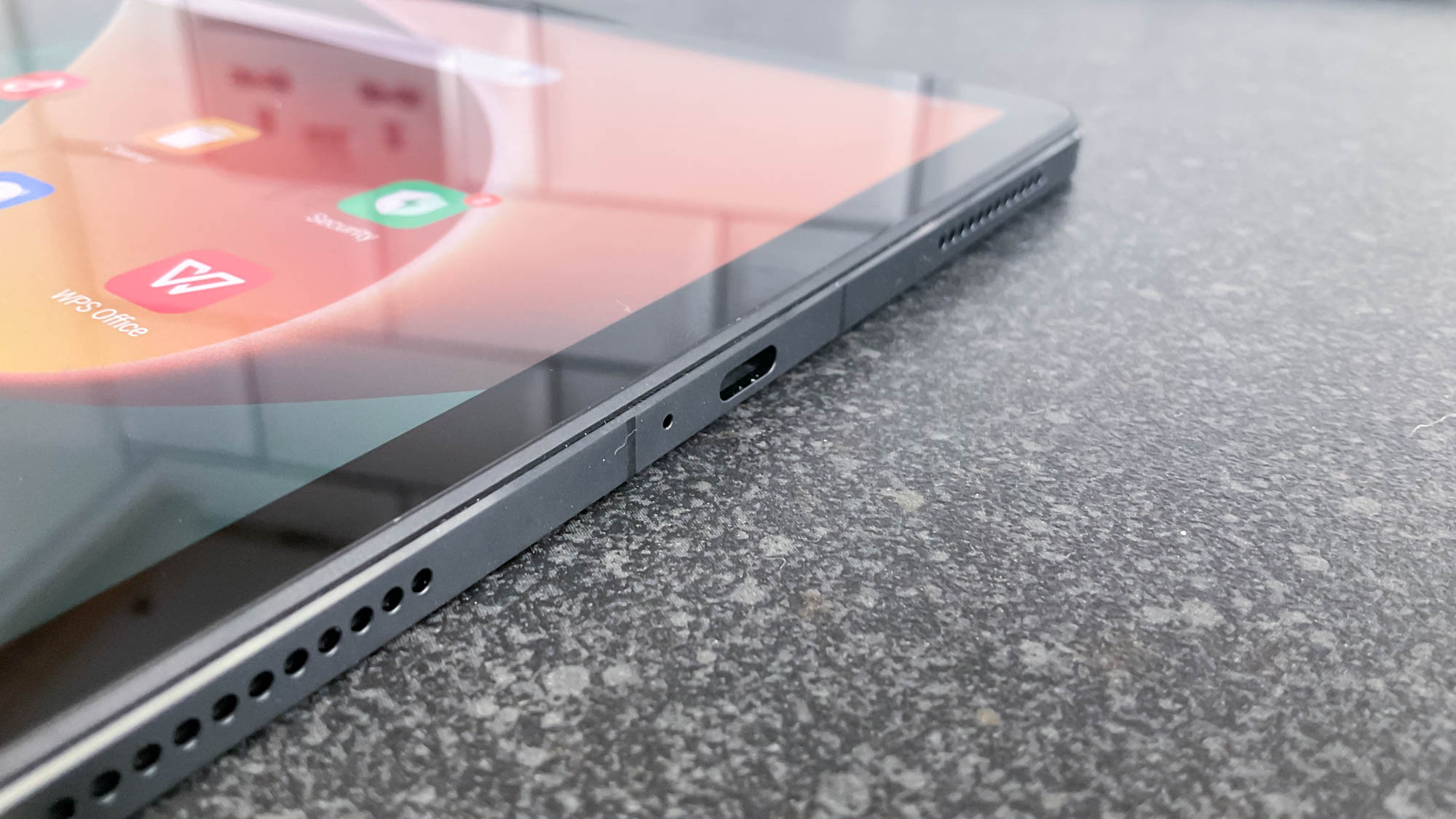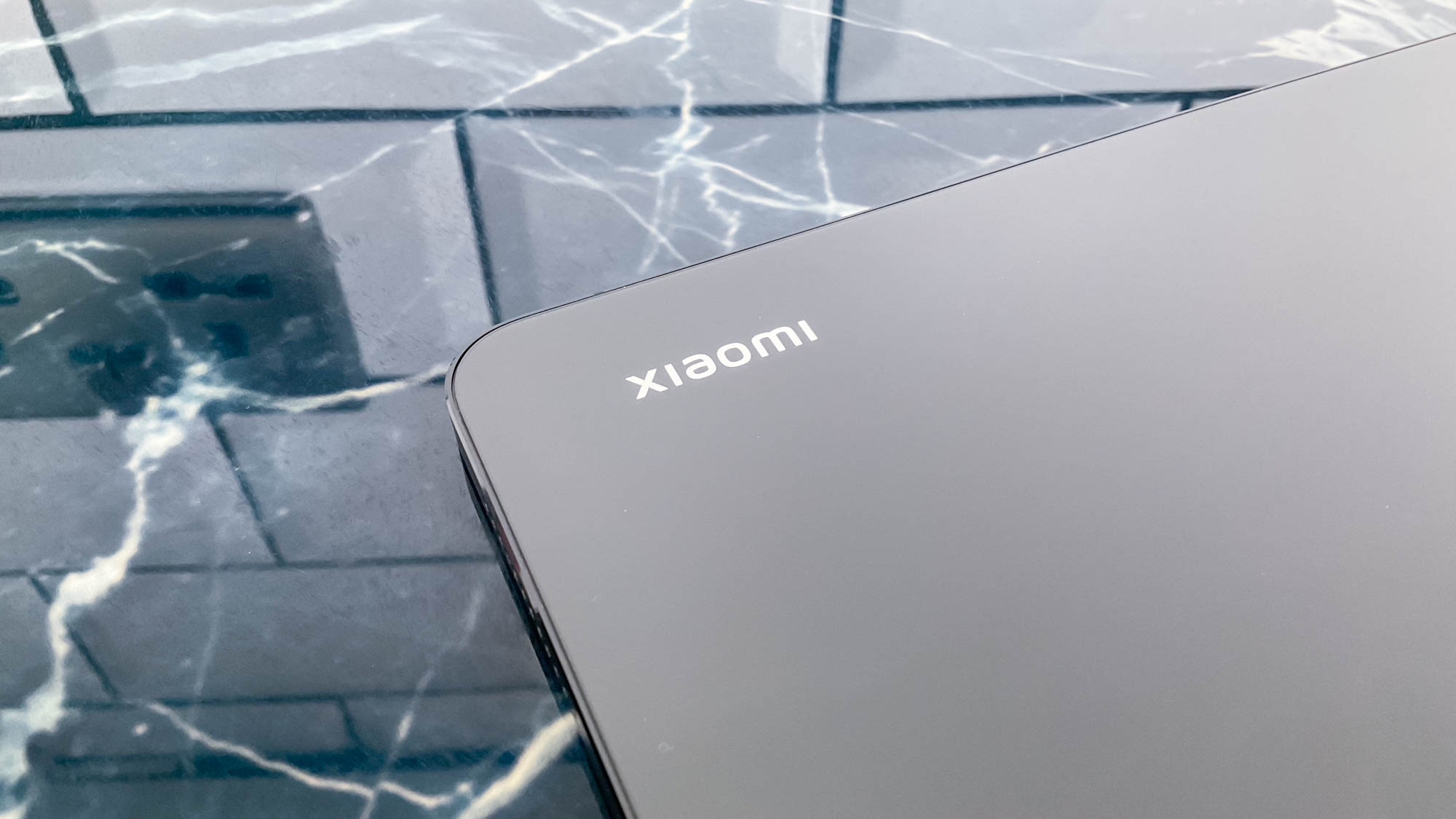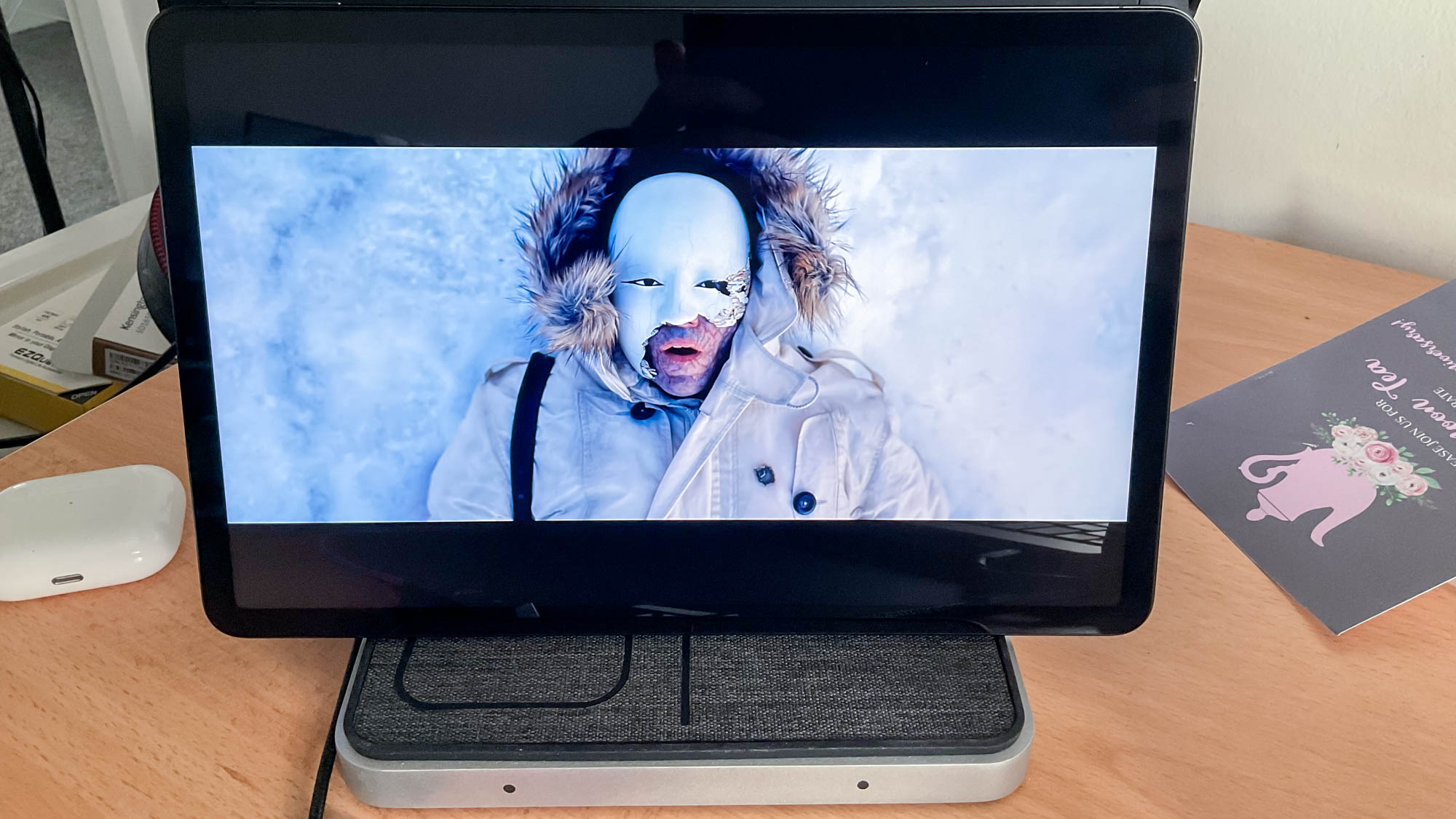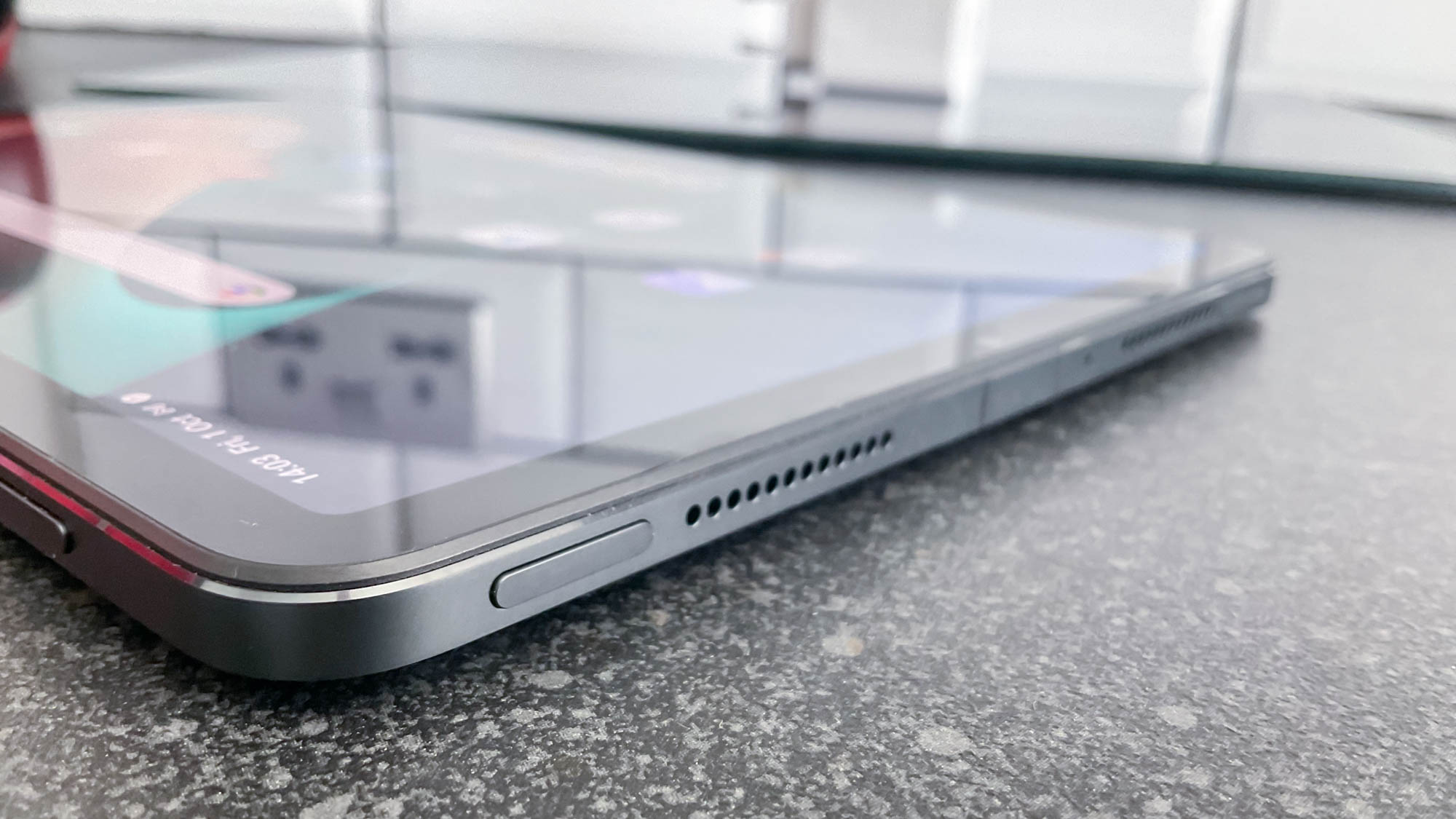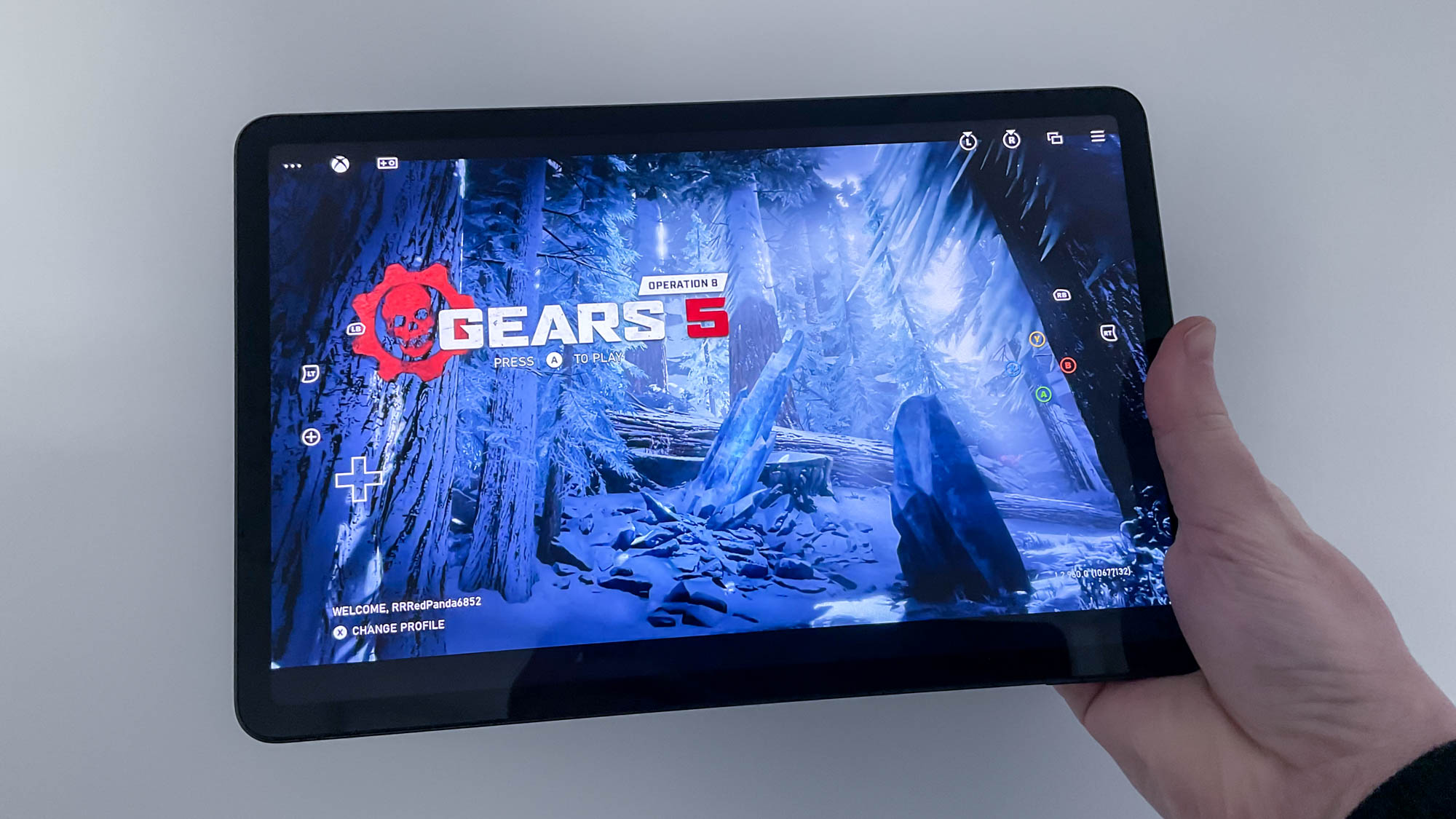Laptop Mag Verdict
The Xiaomi Pad 5 is an exceptional Android tablet thanks to its smooth MIUI for Pad OS and bright display, but it lacks processing power to make it a game-changing slate.
Pros
- +
Bright 120Hz display
- +
Affordable
- +
Improved MIUI for Pad OS
- +
Great battery life
Cons
- -
Mediocre performance
- -
Accessories sold separately
- -
Passable cameras
Why you can trust Laptop Mag
Price: From £369
CPU: Qualcomm Snapdragon 860
OS: MIUI for Pad
RAM: 6GB
Storage: 128GB, 256GB
Display: 11-inch (1600 x 2560 pixels) LCD, 120Hz refresh rate
Battery: 8,720mAh capacity
Size: 10 x 6.54 x 0.26 inches
Weight: 1.1 pounds (511g)
Over the past couple of years, tablets have gone through an unspoken renaissance of sorts. With the release of the ever-impressive iPad Air (2020) and the Samsung Galaxy Tab S7, these devices are beginning to question the differences between a 2-in-1 laptop and a powerful slate. This is especially true with the M1-powered iPad Pro (2021).
And now we have the Xiaomi Pad 5 to add to the list as it’s a significant update to its 2018 sibling, the Mi Pad 4. Not only does Xiaomi’s latest Android tablet bring a host of improvements, from the wonderful 11-inch, 120Hz display to the upgraded Qualcomm Snapdragon 860 processor, but it also brags a refined MIUI for Pad OS that demands to be compared to Apple's unrivaled iPadOS — to a point.
Despite its improvements, Xiaomi’s Pad 5 is still trumped by Apple’s slew of tablets. The slate’s mediocre performance will be suitable for most consumers to browse the web, binge-watch movies and play Android games on, but it will struggle to keep up with more demanding apps for professionals. What’s worse, the exclusion of the Xiaomi Smart Pen and detachable keyboard limit the potential of the tablet, and only bump up the otherwise affordable price tag.
Xiaomi Pad 5 price and configurations
Configurations for the Xiaomi Pad 5 start with a 6GB of RAM, 128GB SSD model for £369/€369 (around $497). There is also a 6GB of RAM, 256GB SSD model available for those in need of more space, but this isn’t currently available in the U.K. and Europe. You’ll find on Xiaomi’s official U.K. product listing page the Pad 5 is only available in Cosmic Gray, but it also launched in a Pearl White colour option in other markets.
At this price, the Xiaomi Pad 5 is more affordable than the best tablets on the market, including the iPad Air (2020) (from $599), iPad Pro (2021) (from $1,099) and Samsung Galaxy Tab S7 (from $649). The Pad 5 doesn’t boast the same impressive performance as these tablets, however, and Apple’s basic iPad (£319) is considerably cheaper yet still offers superb speeds (both in the A12 Bionic and 9th Gen’s A13 Bionic).
Unfortunately, the Xiaomi Pad 5 does not come with the new Xiaomi Smart Pen or detachable keyboard, which significantly limits the tablet’s functionality. The Smart Pen, which has been designed to work with the tablet, is sold separately.
Xiaomi Pad 5 design
From a design perspective, it’s hard not to see the Xiaomi Pad 5 as a distant cousin of the iPad Air (2020). From the button placement and circular vents at either end of the tablet to the display bezels, it’s clear Xiaomi has taken design cues from the iPad — and I praise the company for doing so.
The Xiaomi Pad 5 is a sleek device that begs to be picked up, featuring the same slim body and rounded edges as the iPad Air. You’ll even find an oblong power button on the top edge of the tablet, along with two volume control buttons that run along the side. Although, the latter are joined on the Pad 5. You’ll also find the same camera placement, and an identical magnetic strip to place a stylus. So far, so iPad.
The differences lie in the shape of the device. The Xiaomi Pad 5 is slightly wider, with more space cut out for its rear camera. You’ll also find the display juts out slightly, as opposed to the panel being part of the tablet’s body. On the rear, the Pad 5 hones its design with a silver engraving of the “Xiaomi” logo and its cool Cosmic Gray hue, but it is a fingerprint fiend. Lastly, the edges of the rear aren’t completely flat, as there are slight crevices that helped me grip the tablet when picking it up from a table.
Like most modern tablets, a single USB Type-C charging port is found on the bottom of the Pad 5, with no headphone jack in sight. I suppose that’s where Xiaomi’s Mi True Wireless Earbuds Basic 2 come in. You also won’t find a Touch ID sensor on the Pad 5, but you do get Face ID to unlock the slate.
Coming in at 10 x 6.54 x 0.26 inches and weighing 1.1 pounds, the Xiaomi Pad 5 shares virtually identical dimensions to the Samsung Galaxy Tab S7 (10 x 6.51 x 0.25 inches, 1.1 pounds). The iPad Air is slightly smaller and lighter than both these tablets (9.7 x 7 x 0.24 inches, 1 pound), along with the even smaller Samsung Galaxy Tab A7 (9.8 x 6.2 x 0.3 inches, 1 pound). Overall, the Xiaomi Pad 5 is a travel-friendly tablet.
Sign up to receive The Snapshot, a free special dispatch from Laptop Mag, in your inbox.
Xiaomi Pad 5 display
Sporting an 11-inch, 1600 x 2560 pixels LCD panel with DCI-P3 support, a 16:10 aspect ratio, and a 120Hz refresh rate, the Xiaomi Pad 5 delivers a fantastic display for watching movies or scrolling through content.
Thanks to the Pad 5’s True Display, colours are rich and vibrant, and the viewing experience is only made better by the display’s excellent brightness. When checking out the final trailer of No Time To Die, the brilliant whites shown when Rami Malek’s Lyutsifer Safin lies in the snow with a broken mask is pleasing to the eye, while the cracks from the onslaught of bullets Bond’s car takes during a shootout were clear and detailed. Watching it in a brightly lit room didn’t take away from the viewing experience, either. However, bumping up the display brightness level to maximum did start to drain the battery at a faster rate, but we’ll come to this later.
Xiaomi Pad 5 audio
I’ve never put too much thought into my iPad Air’s stereo speakers except that they are decently loud and do the job. With the Xiaomi Pad 5, however, I was thoroughly impressed with the punchy beats and distinct sounds its quad-speaker setup delivered.
To test if I could transform the Pad 5 into an audio device to kickstart a rager, I played Dua Lipa’s “Future Nostalgia” on the YouTube Music app. Even at max volume, not one layer of sound overwhelmed the other, as I could jam to the smack of percussion and enjoy Dua Lipa’s distinct vocals all at once. Having a well-tuned bass coming from both ends of the tablet really does deliver, as Xiaomi puts it, a “direct impact.”
I then had the random urge to listen to the timely classic “Scotty Doesn’t Know” by Lustra (or Matt Damon in Eurotrip) and jammed out to the heavy guitar riffs and appreciated the subtle vocals of the singer letting everyone know that Scotty really doesn’t know. While the Pad 5’s speakers could fill a room with sound on max, I found the volume was too low when reaching the 50% mark. Still, finding the right balance in sound wasn’t hard when adjusting to anything above 50%.
Xiaomi Pad 5 performance
The Xiaomi Pad 5 is fitted with an octa-core Qualcomm Snapdragon 860 processor and an impressive 6GB of RAM. Despite being a couple of years old, the Snapdragon 860 is still a reputable chip that will allow most consumers to blaze through multiple apps without a hiccup, split screening et al.
To put the system under pressure, I opened a number of apps and tabs on Google Chrome to see how the Pad 5 would hold up. This included YouTube, 20 Google Chrome tabs, Netflix, and Call of Duty: Mobile. Fortunately, Xiaomi’s slate ran it all without any stuttering or lag. What’s more, the 120Hz refresh rate made scrolling through Instagram and websites like Laptop Mag a smooth experience. That said, when scrolling through pages loading embedded videos, I did see the refresh rate slow down, but not enough to impede its performance.
The Pad 5 is also great for gaming, especially with Xbox Cloud Gaming on Xbox Game Pass becoming a more convenient way to play AAA games. While the cloud gaming platform can be played on any device, the Pad 5’s suitably sized display and brightness made playing games such as Gears 5 and Forza Horizon 4 shine. As for games from the Google Play Store, I tested out Call of Duty: Mobile and Asphalt 9: Legends and found everything from the responsive touch controls to the unhindered performance to work smoothly. Although, I did find it can take a couple of minutes to boot up each game.
When put to the test via the Geekbench 5.0 overall performance benchmark, the Xiaomi Pad 5 achieved a multi-core score of 2,614. This blazed past the more affordable range of tablets such as the Samsung Galaxy Tab A7 (1,405, Snapdragon 662), but it couldn’t keep up with the bigger contenders including the Samsung Galaxy Tab S7 Plus (2,910, Snapdragon 865+), iPad Air (4,262, A14 Bionic), and Surface Pro 7+ (4,825, Core i5-1135G7). We won’t even count the latest M1 iPad Pro (7,298).
When we ran the JetStream 2.0 test, which examines web-browsing performance, the Xiaomi Pad 5 received a score of 70. That outdoes the Galaxy Tab A7 (32.8), Lenovo Smart Tab M10 Plus (17.6), and Samsung Galaxy Tab S6 Lite (26.8). Among Android tablets, the Xiaomi Pad 5 offers brilliant performance.
MIUI for Pad
Xiaomi has tweaked its OS to deliver a better user experience for its slate, as opposed to sticking with the company’s own modified Android OS, MIUI. This time, Xiaomi introduces MIUI for Pad, and it brings tablet-specific features Android users will appreciate despite Apple bucking the trend of tablet operating systems in 2019 with iPadOS.
MIUI for Pad may not offer any groundbreaking features, but it's enough to unlock its potential as a travel-friendly device for professionals, creatives, and multitaskers — especially when paired with a stylus and keyboard. First off, there’s an App Drawer that lets users quickly access their most frequently-used apps. That’s nothing new for Android, but it’s great to see being used effectively on a tablet. Plus, swiping up lets you quickly switch between all your open apps much like on iPadOS.
Furthermore, long-pressing an app window provides a number of options. This includes locking an app, splitting the screen to have two apps run side-by-side, and turning an app into a mini-floating window. With this, I could take notes, scroll through the news in Google Chrome, and watch a bit of Netflix in a small window. This doesn’t work as smoothly as iPadOS, as swiping up in the wrong place made me lose the split-screen. That said, it’s extremely easy to set up and it works smoothly.
As an iPad Air (2020) devotee, it’s hard to fault an operating system that does virtually everything iPadOS can offer. But MIUI for Pad still has catching up to do, especially when it comes to having more optimized apps for the tablet and a better-sized keyboard. Apps such as Twitter in landscape mode aren’t up to scratch compared with iPadOS, while the keyboard appears too squashed to type on comfortably. The good news is that Xiaomi promises to have over 2,000 optimized apps for the Pad 5 by the end of the year, which is always a good sign.
Xiaomi Pad 5 cameras
The Xiaomi Pad 5 won’t take over your current camera setup, and despite having more megapixels than the iPad Air, photos are less sharp. The Pad 5 boasts a 13MP camera on the rear and an 8MP front-facing camera that supports 1080p resolution — this is ideal for the world of video calls we live in.

Xiaomi Pad 5 Camera Test
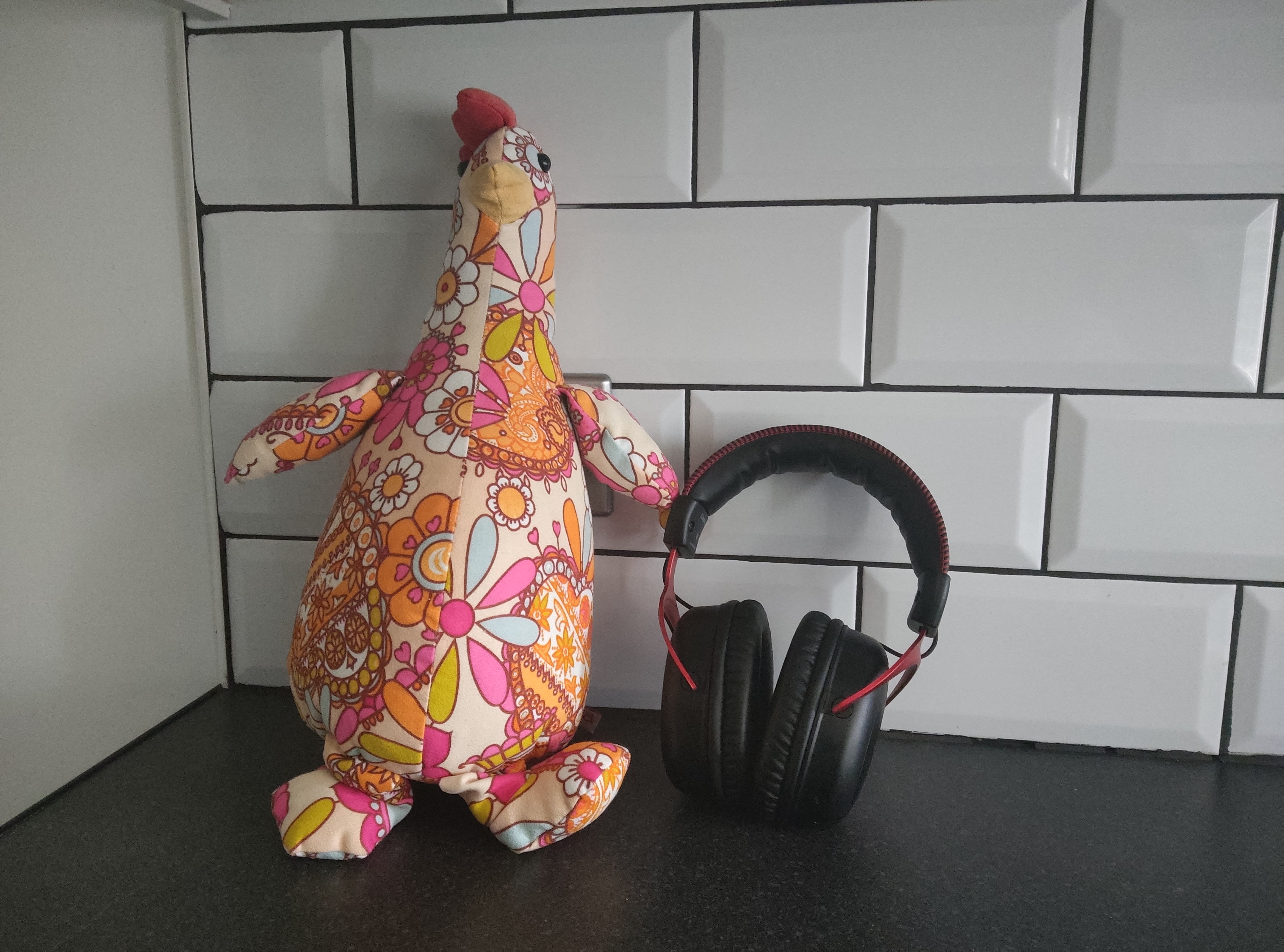
Xiaomi Pad 5 Camera Test
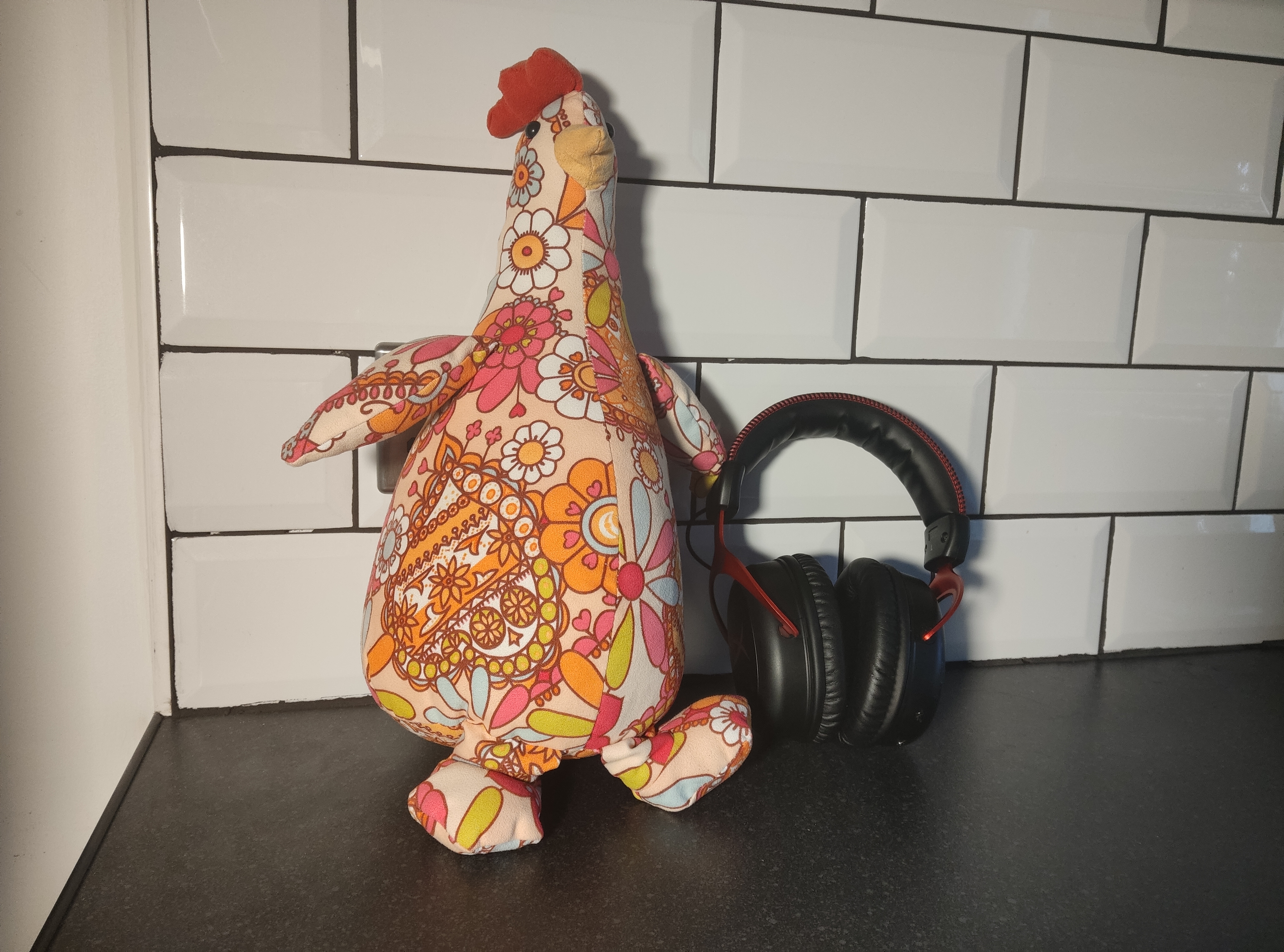
Xiaomi Pad 5 Camera Test
The rear camera can take some great snaps in a well-lit room, as you’ll find the material and light colours on this quirky decorative chicken to be prominent and the creases on the HyperX Cloud II’s cushions are evident. However, these are fairly standard quality photos. After closing the blinds, the camera quality declined, with pictures still delivering enough light but looking grainy. When I switched on a light stand, however, the Pad 5’s camera captured the small details and distinct colours of both the chicken and the headphones.
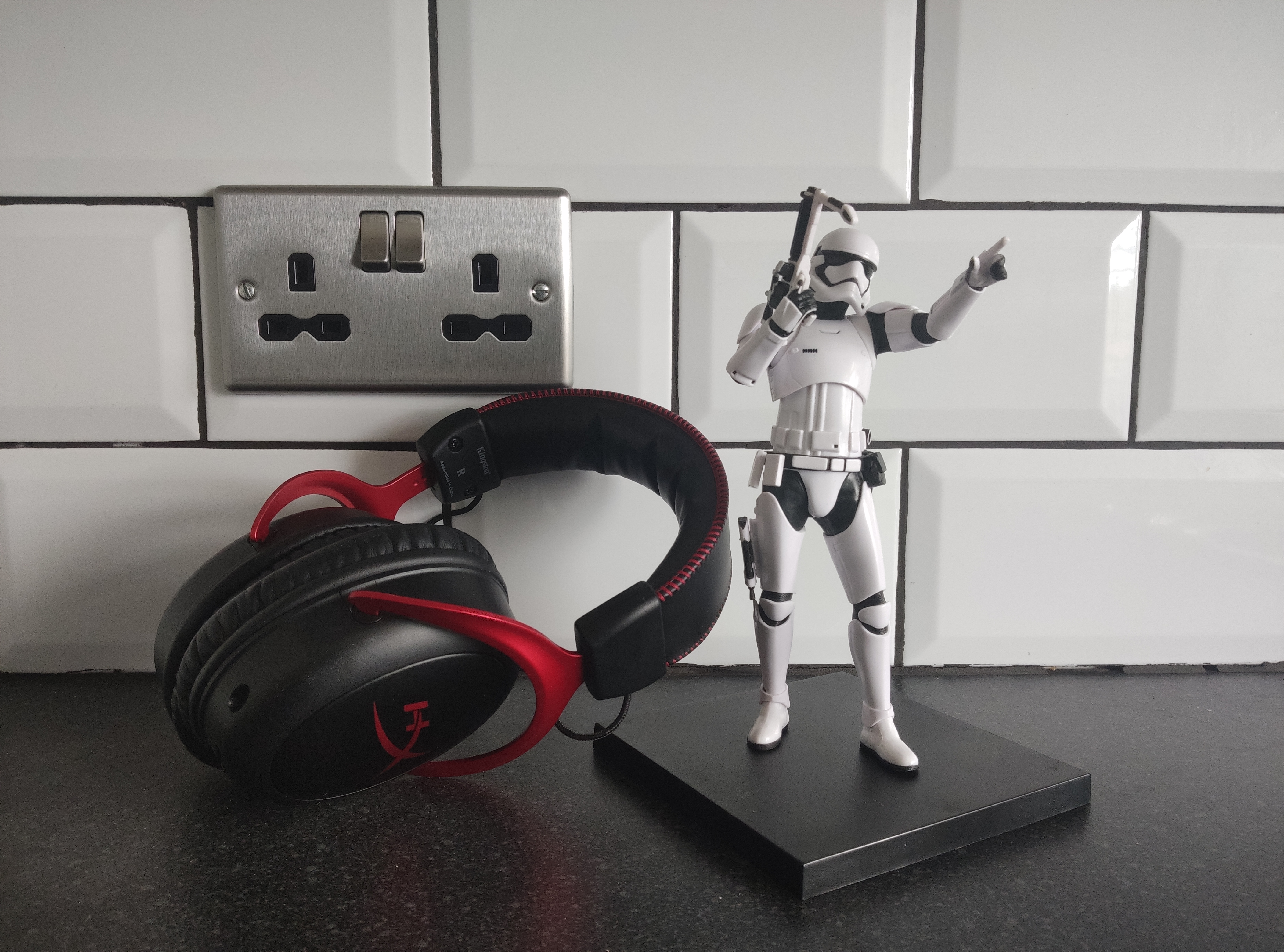
Xiaomi Pad 5 Camera Test

Xiaomi Pad 5 Camera Test

Xiaomi Pad 5 Camera Test
I found the same results when taking pictures of my Stormtrooper figurine, with the subtle details of the armor being lost to blurriness when capturing pictures in low-light.
I was happy with the selfie camera quality on the Pad 5, as it captured the fabric and smaller details on the aforementioned chicken. When using the camera on myself, it captured the greenish/bluish hue of my eyes, along with the random patches of facial hair I need to shave off.
Xiaomi Pad 5 battery
Xiaomi fits an 8,720mAh battery capacity in the Pad 5 and claims it can run up to 10 hours of gaming, 16 hours of video playback, and up to five days of music playback. The extra oomph in battery size is noticeable, but the 22.5W charging brick doesn’t provide the “turbo charge” the tablet claims it does when plugged in.
Over three days of light usage, sparingly using the Pad 5 to listen to music and watch YouTube videos, the Pad 5 had only dropped to about 70%. That’s incredibly useful for casual users. However, as soon as I turned off the automatic brightness function and turned up the brightness level, the battery drained at a much faster pace. Of course, turning up the brightness level will always drain a device’s battery, but there was a more significant jump on the Pad 5.
When it came to charging the Pad 5, it took just under an hour to charge from 0% to 50%. The slate states that it’s in “turbo charging” mode, but I wouldn’t call this lightning-fast speed. Still, the battery life itself more than makes up for this.
During the Laptop Mag battery test, which involves continuous web surfing, the Xiaomi Pad 5 lasted 14 hours and 11 minutes. Compared with the iPad Air (10:29), Galaxy Tab S7 (13:08), Galaxy Tab A7 (13:13) and iPad (12:57), the Pad 5 survived a full hour before calling it quits.
Bottom line
The Xiaomi Pad 5 is the tablet many Android fans have been searching for, boasting a brilliant display, a quality audio setup and a long-lasting battery casual tablet users will appreciate. With the hugely improved MIUI for Pad, Xiaomi’s Android slate is now one step closer to the fluid and adaptable OS that makes Apple’s iPad so popular, especially when it’s attached to a suitable keyboard and the Xiaomi Smart Pen.
So, does the Xiaomi Pad 5 set a new standard for Android tablets? Not quite, but it's still a compelling device. The lack of an included stylus or keyboard may keep the tablet’s cost down, but it also prevents it from being anything more than a great slate for binge-watching movies or browsing the internet. Plus, using a previous-gen Snapdragon processor means it can’t keep up with the current generations of chips.
Still, I can’t deny the Xiaomi Pad 5 would be a fantastic option for those in need of an affordable, yet quality Android tablet. For those looking for a device that can handle a huge workload, we’ll point you in the direction of the recent iPad Pro (2021), along with the best 2-in-1 laptops on the market.

Darragh Murphy is fascinated by all things bizarre, which usually leads to assorted coverage varying from washing machines designed for AirPods to the mischievous world of cyberattacks. Whether it's connecting Scar from The Lion King to two-factor authentication or turning his love for gadgets into a fabricated rap battle from 8 Mile, he believes there’s always a quirky spin to be made. With a Master’s degree in Magazine Journalism from The University of Sheffield, along with short stints at Kerrang! and Exposed Magazine, Darragh started his career writing about the tech industry at Time Out Dubai and ShortList Dubai, covering everything from the latest iPhone models and Huawei laptops to massive Esports events in the Middle East. Now, he can be found proudly diving into gaming, gadgets, and letting readers know the joys of docking stations for Laptop Mag.
